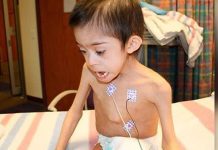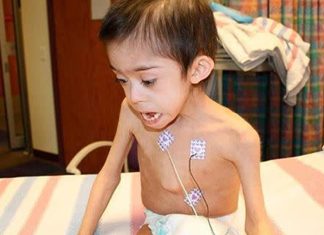The Silent Threat: Understanding Ischaemic Heart Disease
Ischaemic heart disease (IHD) has emerged as the predominant cause of mortality worldwide, a stark reality highlighted by the World Health Organization. In 2019 alone, cardiovascular diseases were responsible for a staggering 8.9 million deaths, underscoring the urgent need for awareness and understanding of this health crisis. Despite the alarming statistics, many patients and healthcare providers often overlook the early warning signs of heart disease, a critical factor that can lead to severe outcomes. Understanding the complexities of IHD is essential for both prevention and timely intervention, as heart disease affects not only individual lives but also healthcare systems globally.
Recognizing the Prodromal Symptoms
Research published in the National Library of Medicine outlines various prodromal symptoms that may precede acute cardiovascular events. These include chest pain, heaviness, burning sensations, palpitations, fatigue, and sleep disturbances. Beyond these common symptoms, individuals might experience shortness of breath (SOB), dizziness, anxiety, sudden temperature changes, back pain, and even gastrointestinal symptoms like vomiting. Each symptom can vary widely in intensity and duration, making them challenging to identify. For instance, while a dull ache in the chest might be dismissed as heartburn, it could potentially signal a more serious underlying condition. Recognizing these symptoms is crucial, as they serve as vital indicators that something may be amiss. Furthermore, it’s important to note that not all symptoms are experienced equally among different demographics. Women, for example, may present with atypical symptoms compared to men. A study in the Journal of the American College of Cardiology suggests that women are more likely to experience fatigue and anxiety as warning signs of heart disease. This discrepancy emphasizes the need for tailored awareness campaigns that address the specific symptoms that various populations may encounter, ensuring that everyone is equipped to recognize potential heart issues.

The Impact of Fatigue
One of the less discussed but significant symptoms of heart issues is fatigue. Many people commonly associate fatigue with a busy lifestyle or lack of sleep, but it can often signal deeper health problems. When the heart struggles to receive an adequate blood supply due to narrowed arteries, the body may manifest extreme tiredness. This condition can be exacerbated in individuals experiencing heart-related issues, leading to a cycle of fatigue that is often misunderstood. For instance, a person may feel exhausted after minimal exertion, leading to a sedentary lifestyle, which paradoxically can worsen heart health. Moreover, chronic fatigue can affect mental health, leading to conditions such as depression and anxiety. This is particularly concerning as these mental health challenges can further complicate the recognition of physical symptoms of heart disease. It’s crucial for individuals and healthcare providers to consider fatigue within a broader context, understanding that it can be both a symptom of a heart issue and a contributing factor to overall health decline.
Shortness of Breath: A Cause for Concern
Shortness of breath, or dyspnea, is another alarming symptom that should never be ignored. This sensation occurs when the lungs fail to deliver sufficient oxygen to the bloodstream, which can indicate underlying heart problems. According to WebMD, persistent shortness of breath accompanied by fatigue can be indicative of heart failure. Heart failure is a critical condition where the heart’s ability to pump blood effectively is compromised, leading to inadequate oxygenation of body tissues. Instances of shortness of breath may occur at rest or during exertion, and their unpredictability can make them particularly frightening for individuals. In many cases, individuals may dismiss these symptoms as mere signs of aging or a result of being out of shape. However, it’s essential to recognize that even minor episodes of dyspnea can warrant a medical evaluation. Delaying assessment can lead to dire consequences, as heart failure can progress quickly, resulting in severe complications. Engaging in patient education about the nuances of shortness of breath and its potential implications can empower individuals to seek help sooner rather than later.

Understanding Dizziness and Cold Sweats
Dizziness and unexpected cold sweats may also arise from poor circulation, which is often linked to cardiovascular issues. These symptoms should be treated with caution, as they can signify a lack of adequate blood flow to vital organs. Many individuals who have experienced a heart attack report having flu-like symptoms in the days leading up to the event, which can easily be misattributed to common illnesses. For example, a person may experience nausea and lightheadedness, mistakenly thinking it’s a stomach bug, rather than a potential indicator of a heart condition. It is essential to listen to your body and consult a healthcare professional if you notice these signs. Additionally, cold sweats can be particularly deceptive. They may seem innocuous at first but can indicate that the heart is under duress. In emergency situations, individuals may experience sweating while feeling clammy, which is often an indicator that the body is in fight-or-flight mode. Understanding these symptoms can lead to timely medical interventions that can save lives.
Chest Pressure: A Definitive Warning
Another hallmark symptom of an impending heart attack is the sensation of chest pressure. This discomfort may start as a mild tightness and progressively intensify, often culminating in a critical situation. Individuals experiencing such symptoms must seek immediate medical attention. Understanding these signs can be life-saving, as timely intervention is key to preventing serious cardiovascular events. Notably, chest pressure can vary among individuals; some may describe it as a sensation akin to an elephant sitting on their chest, while others might experience a more subtle discomfort. It’s important to recognize that chest pressure can radiate to other areas of the body, such as the arms, neck, jaw, or back. This radiation of pain can further complicate the presentation, as individuals may attribute the discomfort to musculoskeletal issues instead of a heart-related event. Educating the public on the diversity of these symptoms is critical to ensuring that people do not downplay the seriousness of their condition.
Congestive Heart Failure: A Closer Look
For those diagnosed with congestive heart failure, one or both lower chambers of the heart may lose their effectiveness in pumping blood. This condition can lead to a backup of blood in the legs, ankles, and feet, resulting in edema—a visible sign of the heart’s struggle. This fluid accumulation can cause discomfort and significantly impact quality of life. Therefore, individuals experiencing symptoms of heart failure should engage in proactive discussions with their healthcare providers to manage their condition effectively. Managing congestive heart failure may involve lifestyle changes, medication adherence, and regular monitoring, all of which can contribute significantly to an individual’s well-being. Furthermore, education on dietary restrictions, such as sodium intake, can play a crucial role in managing this condition. Patients may benefit from understanding the importance of a heart-healthy diet and the impact of weight management on their overall heart health. Collaborating with nutritionists or dietitians can provide valuable resources for patients, helping them make informed choices that support their health journey.
Conclusion: Awareness is Key
In light of the prevalence of ischaemic heart disease, it is imperative to raise awareness about its symptoms and risk factors. Early recognition and intervention can dramatically improve outcomes for individuals at risk. It is crucial to share this knowledge with family and friends, as it may help save lives. Awareness campaigns and educational resources can empower communities to prioritize heart health and seek timely medical care. By fostering an environment that encourages open conversations about heart health, we can help dismantle the stigma surrounding cardiovascular disease and ensure that individuals feel comfortable discussing their symptoms with healthcare professionals. Remember, if you or someone you know is experiencing any of the aforementioned symptoms, don’t hesitate to reach out to a medical professional for guidance. The journey to better heart health begins with awareness, education, and proactive steps towards prevention and care. *Disclaimer: Always consult with a healthcare professional before making any medical decisions based on this information.

















